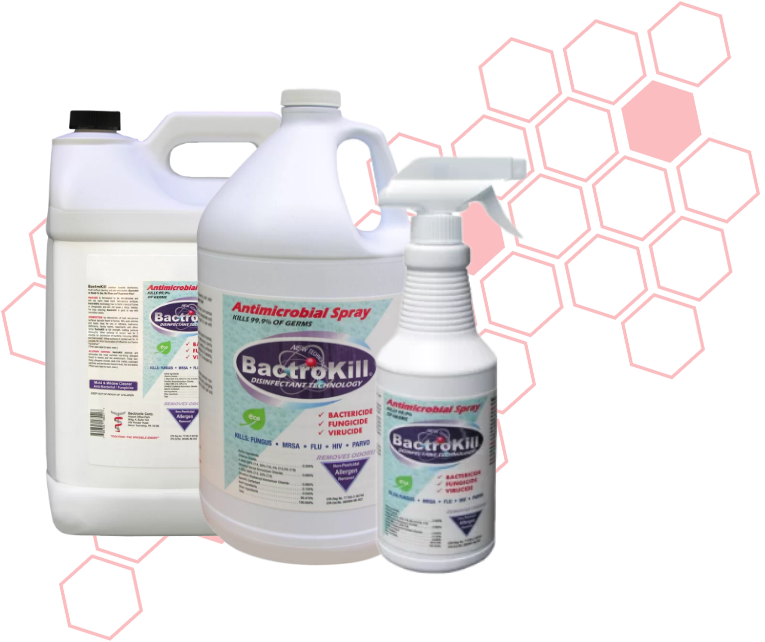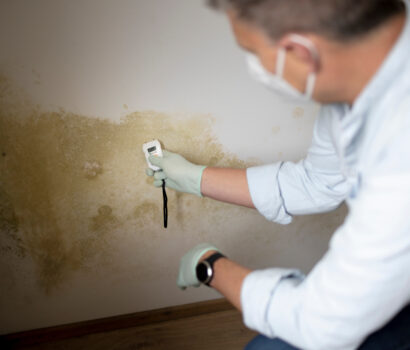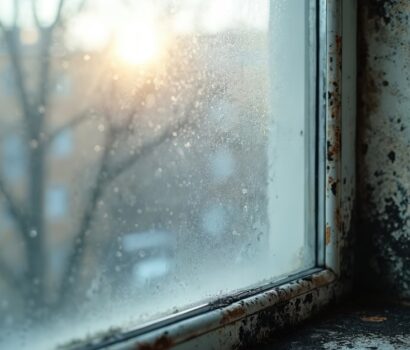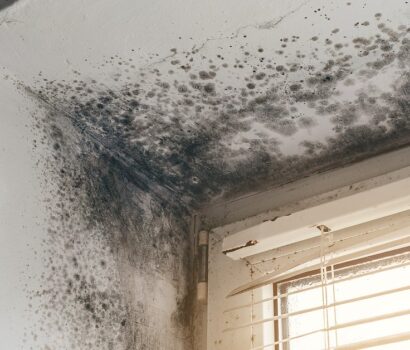Molds come in all shapes, sizes, and colors; while some may think that color can serve as an indication of toxicity level, unfortunately, it cannot. The main means of identifying mold involves looking closely at the structure, spore, and growth morphology, which isn’t easily done without access to a lab.
Regardless of what color a mold is, if it’s in your house, that’s a sign of an active moisture problem and it should be removed as soon as possible so the moisture problem can be fixed. In this guide to mold colors, we cover the most common colors of mold that you might find in your home.
What Do Colors Indicate
Certain mold colors–like black mold–have gained a reputation of being toxic, while others like brown mold have a reputation of being safer. Color isn’t a reliable indicator of the species or the characteristics of any mold in question. Instead, it’s a more reliable indicator of moisture level, the surface on which it grows, and the general location or climate where it is growing. But as far as toxicity is concerned, color isn’t a reliable indicator.
Black Mold
Black mold, also known as Stachybotrys Chartarum, is often characterized by its black to grayish color. This type of mold is believed to contain a large percentage of mycotoxins that could be dangerous to human health. It normally grows on surfaces that contain cellulose or have remained moist for prolonged periods. These include wood, cardboards, ceiling tiles, gypsum boards, and other organic materials.
Various scientific studies indicate that inhaling or touching black mold can cause serious health complications. Common illnesses associated with toxic black mold include:
- Nasal and sinus congestion
- Chronic fatigue
- Pain and aches
- Eye irritation
- Runny nose
- Periodic headaches
Brown Mold
As the name implies, this type of mold is brown. However, it can be caramel or mustard colored depending on its classification. In terms of appearance, brown molds often grow in dark patches and can be found on hard surfaces such as wood, ceramic, and tile. Moreover, they tend to spread rapidly within days, and they release a musty odor after some time. Common symptoms to watch out for include such as sneezing, coughing, irritability, and allergic reactions.
Green Mold
In any case, green is the standard color of fungi. What is more interesting is that there are over 1,000 different species of green mold. When inhaled, the spores of green mold can cause various infections of the lung and pneumonia. These molds are not only a common eyesore, but are also known to trigger reactions such as coughing, asthmatic attacks, runny nose, and itchy skin.
Purple Mold
Purple molds are undeniably eye-catching; they normally grow on walls, underneath wallpaper, vinyl, and siding. However, as attractive as the color might seem, purple molds are quite dangerous. Just like black mold, they contain a large percentage of mycotoxins, meaning they can also cause a variety of conditions ranging from allergic reactions to respiratory problems.
Orange Mold
Orange molds normally form outdoors rather than indoors, but you can find them on your furniture, inside showers, along beams, and subfloors. If left to thrive, orange mold can damage your structure and destroy building materials. Typically, orange molds are characterized by small, tiny spores that gradually change to slime as the mold matures.
If you have a weak immune system, the presence of orange molds might trigger the onset of various health problems. The only reprieve is that this type of mold is not as dangerous as other forms of molds as far as your health is concerned. It is one of the few mold species that are not life threatening.
Yellow Mold
Yellow molds can be found either indoors or outdoors growing predominantly on damp wooden surfaces, like behind leaky window frames, in your attic, and in your basement crawl spaces. Notably, not all types of yellow molds are dangerous to human health. The most dangerous types can be identified by a remediation professional.
Red Mold
Red molds do not grow alone. They normally thrive alongside other darker molds, including the black and gray molds. Red mold loves growing on damp carpets, rugs, and vinyl floors; they can also be found on wall paneling.
Red mold is not as destructive as other types of molds, and they are less harmful in terms of toxicity. However, you may still develop allergic reactions and respiratory conditions when exposed to red molds for prolonged periods.
White Mold
Last on the list is the white mold. This type of mold normally appears in the form of salt deposits that grow on masonry walls. However, it can be found anywhere around the home including on your furniture, clothes, and floors. In terms of appearance and texture, white mold is rather fuzzy and usually darkens as it matures. The main body of the spores is usually translucent but tends to darken as the mold reaches its final stages of life.
The presence of white mold can be devastating. It can destroy and discolor any surface if left to stay for long. As with any other type of mold, white mold can also affect your health adversely. You may develop respiratory infections, headaches and allergic reactions when exposed to white mold.
What Should You Do About Mold?
No matter the color of the mold, it should always be considered bad and should not be growing inside of buildings, whether commercial or residential. Any mold is cause for concern; without professional intervention, you risk exposing yourself to toxins. If you aren’t experienced with mold cleanup, you can also easily spread the spores by accident. Having a mold expert like Bactronix assess your particular situation and formulate a game plan is highly recommended! We can help remove mold the right way and prevent you from making a mistake which could adversely affect your health or the health of the occupants of the structure. Contact us today for a free quote!





